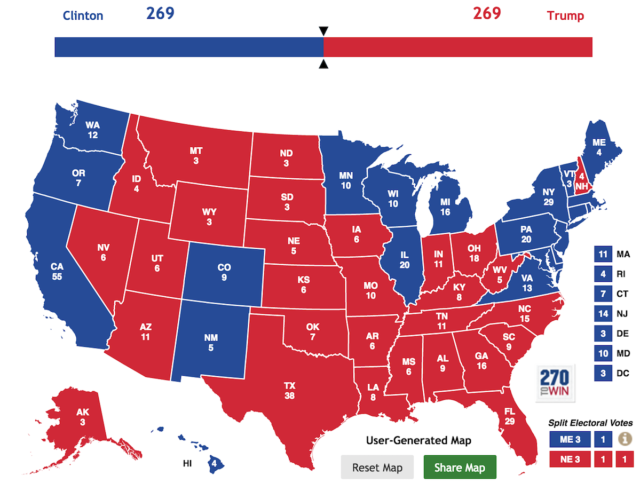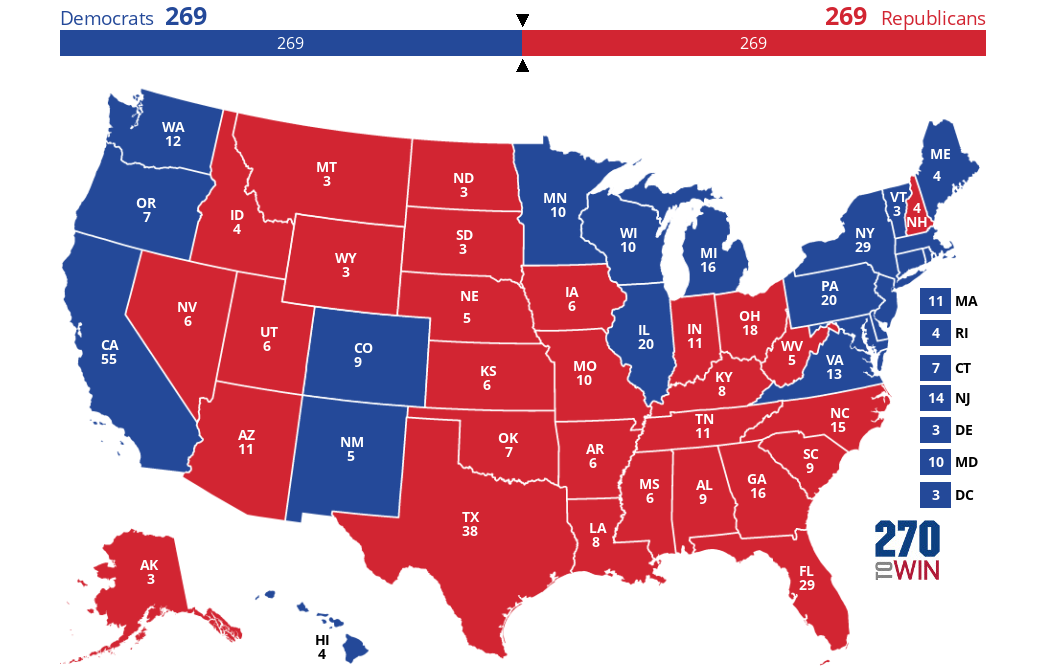
LAUSANNE, Switzerland — What happens if no presidential candidate gets 270 electoral college votes in Election 2016?
I have wondered that for several years now. It’s such a given in the U.S. system that there will be a clear winner, but in other countries that use a majority-voting system, it’s not. If a race is very close or the vote is split between three or four candidates, then the election goes to a runoff election between the two highest-scoring candidates. The U.S. presidential election doesn’t work that way, and there are plausible ways that neither Hillary Clinton nor Donald Trump would get the 270 required for an outright win today.
If nobody wins outright, then the power to choose the president goes to the House of Representatives, and the power to choose the vice-president falls to the Senate, meaning that it is theoretically possible to have a president from one party and a vice-president from another.
A contested election has only happened once under the current voting rules — in 1824 when the vote was split between four candidates: John Quincy Adams, Andrew Jackson, William H. Crawford, and Henry Clay.
In that case, the choice for president went to the House of Representatives, which chose Adams, despite the fact that Jackson received more electoral college votes and more of the popular vote. Under the rules at the time, voters selected the vice-president separately from the president, and therefore James Calhoun became VP with an outright majority of the electoral college votes.
So how could that happen today? Here’s one plausible path:
- Evan McMullin wins Utah
Of course, just about the only way in our current electoral college system for no one to get 270 is if a third-party candidate takes a state. If Evan McMullin manages to pull off the unthinkable and win Utah, he gets six votes. This leaves 532 votes left to split between Clinton and Trump.
If we assume Clinton wins all the states that are safely Democratic according to the Washington Post (14 states including the District of Columbia for 182 votes) and Trump wins all the safely Republican states (16 states with 96 votes), that leaves 20 states to play with.
In my theoretical model, where neither candidate gets 270, I give Pennsylvania, Michigan, Virginia, Wisconsin, Minnesota, Maine, New Mexico and New Hampshire to Clinton for another 82 votes, giving her 264. If I give Florida, North Carolina, Colorado, Nevada, Texas, Ohio, Georgia, Arizona, Indiana, Missouri, Iowa and Alaska to Trump, that gives him another 172 votes for a total of 268. And as stated, Evan McMullin wins the 6 in Utah.
Another possibility would be a sweep of Maine’s electoral votes for Clinton, plus a Colorado victory for her. If Trump won Utah and Nevada while stunning the country with a New Hampshire victory, both candidates would finish with 269.
That, my friends, would be an interesting election.
Map it for yourself at Washington Post’s paths to victory or click the link in the graphic below to use 270towin.com‘s interactive tool.











 Click the map to create your own at
Click the map to create your own at 










